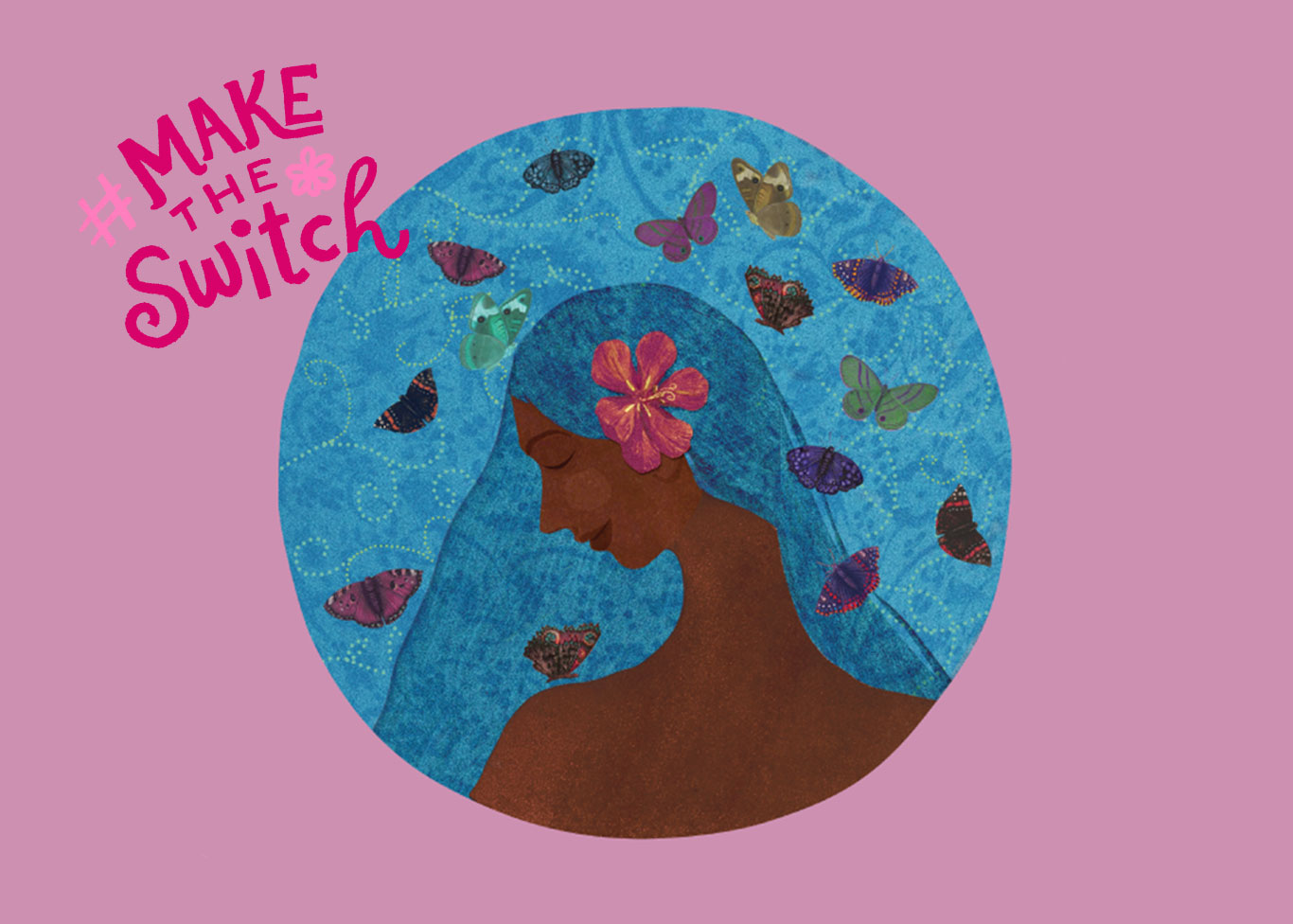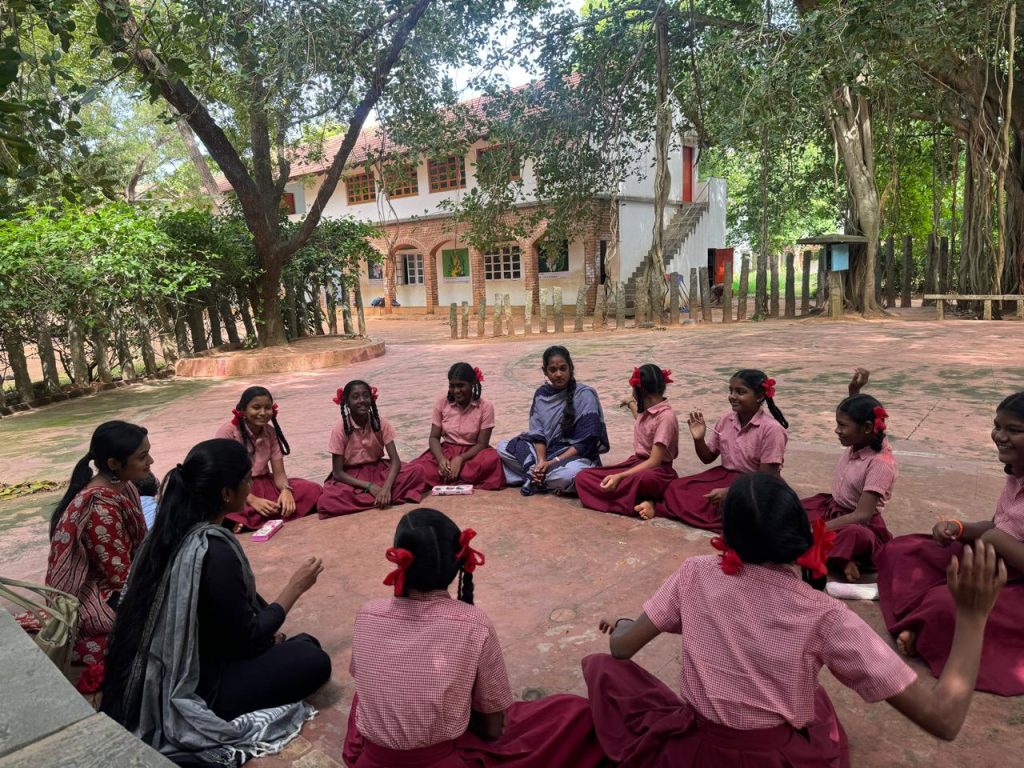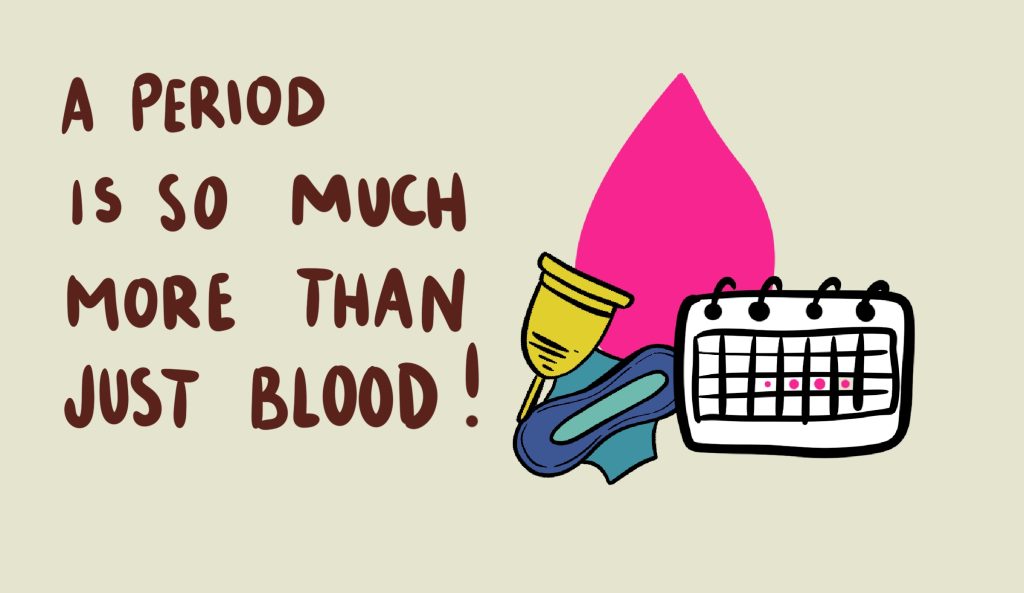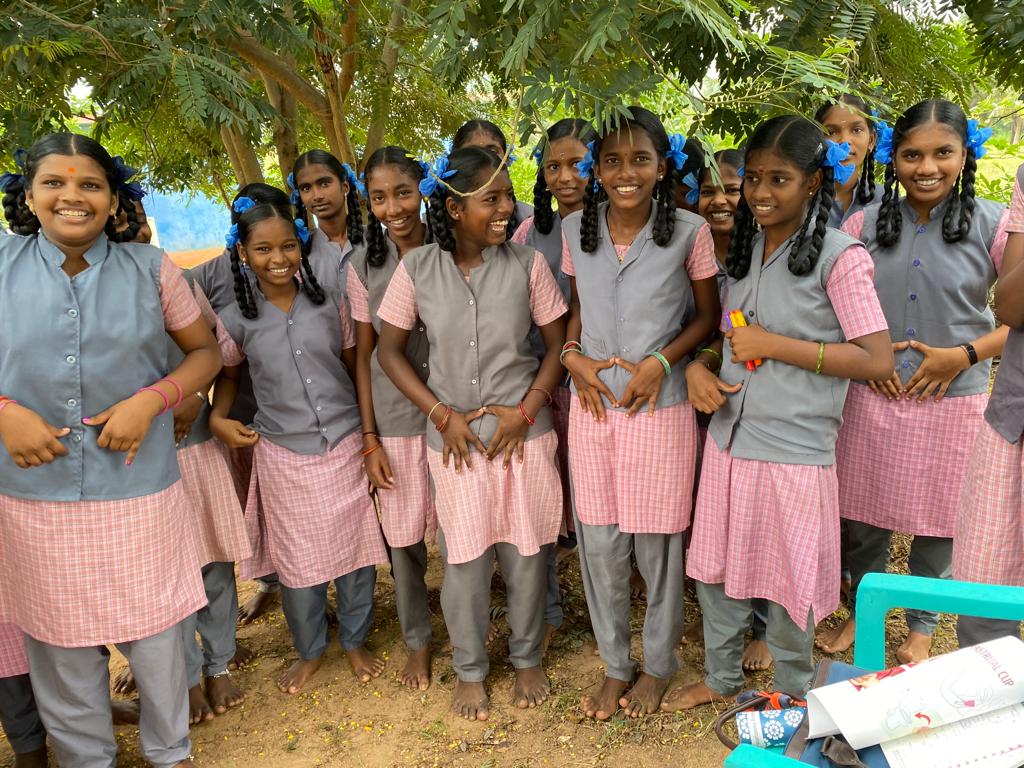For our French campaign this week, ‘Du Rouge Au Vert’ – Eco Femme ambassador and retailer, Frédérique shares her making the switch story in French (English translation below)
Comment je suis passé d’une consommation de produits d’hygiène jetables à une utilisation mensuelle de protections lavables:

Depuis mes toutes premières lunes, j’avais bien intégré cette injonction sociétale qui est que les règles c’est sale, ça pue, ça fait très mal, et que l’essentiel est que personne ne s’aperçoive qu’on « les a ». J’ai fait ce que ma mère me disait, j’ai collé au fond de ma culotte cette espèce d’éponge longue et plus ou moins épaisse, qui me couvrait l’entrejambe, du pubis à l’anus, empêchant ainsi toute fuite suspecte sur mes sous-vêtements. Quelques années plus tard, après avoir connu les rapports sexuels, je passais aux tampons. J’allais acheter mes boites avec la fierté de la femme accomplie, autonome, que rien n’empêchera de faire et d’aller où elle veut. Ce n’était quand même pas mon propre corps qui allait limiter ma liberté de mouvement!
Arrivant sur ma vingtaine, je souffrais de plus en plus souvent de sécheresses vaginales, qui rendaient les rapports intimes douloureux, et me faisaient me sentir misérable, honteuse, pas à la hauteur. Une gynécologue de planning familial me suggéra d’arrêter d’utiliser les tampons, qui pouvaient être à l’origine de ces désagréments. Elle avait raison ! Bien sûr qu’empêcher le flux de s’écouler n’était pas une bonne idée, je ne sus que bien plus tard quelle était la composition de ces petits cotons magiques ! Malheureusement il y a là dedans bien plus que juste du coton, trop blanc pour être honnête!
Et puis j’ai eu un enfant. Pour elle je voulais le meilleur et il était hors de question de coller ses petites fesses toutes neuves dans un agrégat de plastiques, de gels à la composition douteuse, de pesticides, de fongicides, de parfums synthétiques, et d’élastiques qui scient les cuissots tendres. J’ai pris l’option « couches lavables » pour notre plus grand bonheur à toutes les deux.
J’ai fini par prendre conscience que moi aussi, tous les mois, j’enrobais mon intimité dans un tas de produits franchement malsains. Alors j’ai été fouillé sur le net, j’ai cherché des solutions, il n’existait rien que je trouve à la fois agréable et accessible financièrement. Je me suis donc mise à fabriquer mes propres serviettes hygiéniques, en coton, en chanvre, en bambou, j’ai fait des essais, des erreurs, et j’ai fini par être à peu près satisfaite de mes créations.
En 2015 je suis retourné à Auroville, une cité du sud de l’Inde, à laquelle je suis liée depuis toujours. J’y ai découvert une équipe de femmes, qui a créé une ligne de serviettes lavables. Très absorbantes, douces, faciles à laver, et qui tiennent parfaitement en place au fond de la culotte, leurs serviettes étaient une révélation!

Ma fille, mon premier bébé, avait bien grandi, et venait d’avoir ses premières lunes (ou règles). J’étais alors heureuse de lui offrir un « starter kit » comme cadeau de bienvenue dans le monde des femmes fertiles. Je me suis équipée aussi, et en ai ramené quelques unes chez moi pour faire découvrir aux amies. Le succès fut immédiat, toutes celles qui les essayaient en étaient ravies.
L’aspect pédagogique et éducationnel de la démarche Eco-Femme m’a également emballée. Avec le programme « Pad for Pad », a chaque fois qu’une serviette est vendue en dehors de l’Inde (en France par exemple), une est offerte à une jeune fille d’un collège des environs d’Auroville. Ainsi, les ambassadrices Eco Femme donnent des séances d’information autour de la menstruation, et offrent à des classes entières d’adolescentes un moyen de vivre leurs menstrues d’une façon durable pour leur environnement, et respectueuse d’elles mêmes.
Être consciente de son flux est une avancée vers la connaissance de soi, c’est faire reculer l’ignorance dans laquelle sont tenues les femmes autour du sujet de leur appareil reproductif, et de leurs menstrues en particulier. Ne plus masquer ses fluides sous des molécules toxiques c’est déjà accepter le fonctionnement normal de son corps.
Je suis ambassadrice Eco Femme en région Provence Alpes Côte d’Azur, retrouvez sur « Frédérique Au Féminin » les différents modèles, page Boutique ou directement au Centre Paramedical Dracenois (sur rendez vous).

“How I went from a consumption of disposable hygiene products to monthly use of washable pads.
Since my first few moons, I had well integrated this societal order which rules: it’s dirty, it stinks, it’s very wrong, and the main thing is that nobody should realize that I “have them”. I did what my mother told me, I stuck to the bottom of my pants, this long and thick pad, covering my crotch, thus preventing any suspicious leak on my underwear. A few years later, after having my first sexual relation, I switched to tampons. I was going to buy my tampon packets with the pride of an accomplished woman, independent, that nothing will prevent from doing anything or going anywhere. It will not be my own body that would restrict my freedom of movement! Upon arriving at my twenties, I suffered more and more often from vaginal dryness which made intimacy painful and made me feel miserable and shameful. A gynecologist suggested I stop using tampons, which could be the origin of these annoyances. She was right! Of course they prevent the flow, which was not good. I only knew later what was in the composition of these tampons! Unfortunately there is much more than just cotton, too white to be honest!
And then I had a child. I wanted the best for her and it was out of the question to stick her small new buttocks in an aggregate of plastics, gels of dubious composition, pesticides, fungicides, synthetic perfume and elastics that would cut her tender haunches. I took the option of cloth diapers for both our greatest happiness. I finally realized that I too, every month, was wrapping my intimacy in a bunch of frankly unhealthy products. Then I looked on the internet, I was looking for solutions, there was nothing that I could find, both pleasant and accessible financially. So I started making my own sanitary pads, cotton, hemp, bamboo. I did tests, errors, and I ended up pretty much satisfied with my creations.
In 2015, I went back to Auroville, a city in the South of the India, to which I have always been linked. I found a team of women who created a line of washable pads. Very absorbent, soft, easy to wash, and who fit perfectly in place at the bottom of the pants, their pads were a revelation! My daughter, my first baby, grew well, and had her first periods. I was so happy to offer her a ‘starter kit’ as a welcome gift to the world of fertile women. I also bought some for myself, and brought some of them home to show to friends. The success was immediate, all those who tried them were delighted. The pedagogical and educational Eco Femme approach aspect also amazed me. With the program “Pad for Pad“, whenever a pad is sold outside India (in France, for example), one is offered to a young girl from a school in India. Thus, Eco Femme give education sessions around menstruation, and offer to classes of teenage girls a way to live with their menses in a sustainable way for their environment, and respectful of themselves too.
Becoming aware of our own monthly flow is a step toward self-knowledge, it rolls back the ignorance which has held women around the subject of their reproductive system, with their menses in particular. No longer hiding our fluids with toxic disposables is already accepting the normal functioning of the body.
I am an Ambassador for Eco Femme in Provence Alps Côte d’Azur region, you can find me on Facebook: Frédérique Au Féminin, in my Boutique or directly at the Center Paramedical Dracenois.”
![]()







Comments (2)
I made the switch to menstrual cup and ecofemme cloth pads. I now appreciate my body and also have the satisfaction that I’m doing my contribution for the environment!
Lovely, thank you for sharing – you’re right, a small switch can have a big impact!